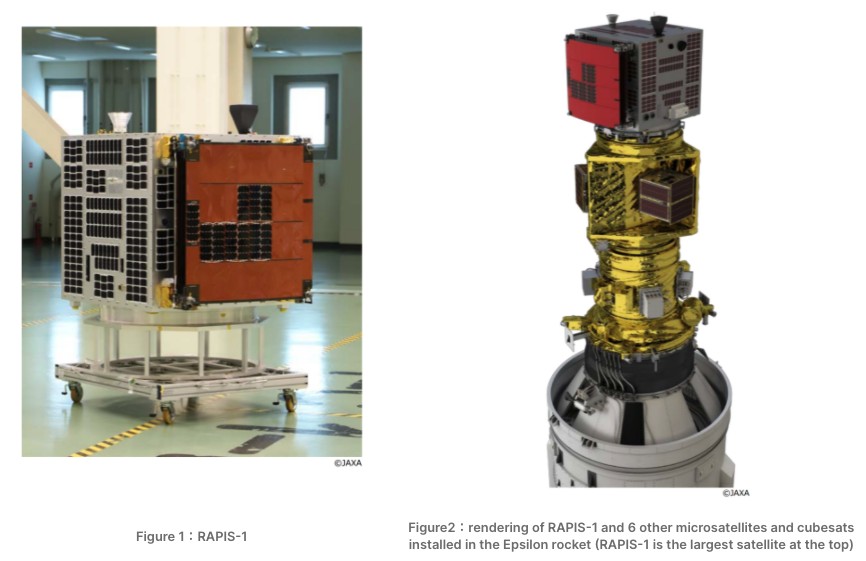Operations Begin for the First Startup-built JAXA satellite
“RAPIS-1” (RAPid Innovative payload demonstration Satellite 1), the small satellite commissioned by the Japanese Aerospace eXploration Agency (JAXA) and designed, manufactured and operated by Axelspace Corporation (HQ: Tokyo, Japan; President and CEO: Yuya Nakamura) has been successfully launched from the Uchinoura Space Center in Kagoshima Prefecture, Japan at 9:50 AM of January 18th, 2019. The Epsilon-4 launch vehicle that carried RAPIS-1 to orbit also contained six other microsatellites and cubesats. At 10:42 AM of the same day the satellite was detached from the rocket. Later, a first signal from it was received, confirming that the solar panels—indispensable for the correct operation of the satellite—were producing enough power and that communication with the ground was functional. The operators have thus closed the “critical operation phase” and begun performing check-out operations on all the on-board components. This initial phase is expected to last roughly one month, after which the “nominal operation phase” will begin and the seven experimental instruments will begin performing in-orbit tests.
About the Innovative Satellite Technology Demonstration Program and RAPIS-1
The Innovative Satellite Technology Demonstration Program is an initiative by JAXA to provide in-orbit validation opportunities to external entities, with the objective of strengthening the technologies behind core satellite components. The Japanese Government’s space program has scheduled four demonstration launch opportunities, one every two years. This launch represents the first of these four events and is termed “Innovative Satellite Technology Demonstration-1”. RAPIS-1, developed by Axelspace, is a 200kg small satellite carrying seven different demonstration payloads. The mission- and bus-related systems in the satellite are designed to be highly independent, a unique characteristic that increases the reliability of the whole spacecraft to better support the highly experimental onboard components.
